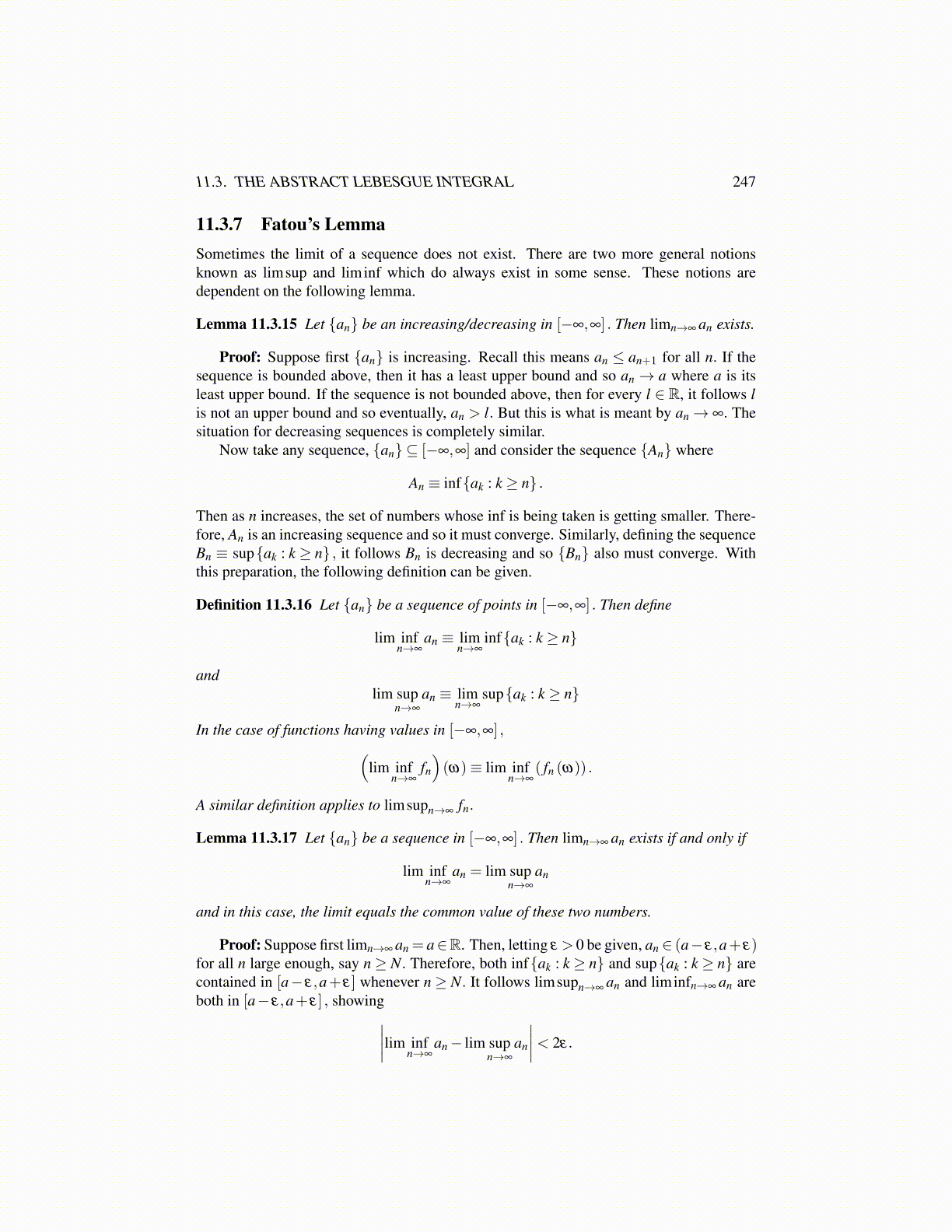
11.3. THE ABSTRACT LEBESGUE INTEGRAL 247
11.3.7 Fatou’s LemmaSometimes the limit of a sequence does not exist. There are two more general notionsknown as limsup and liminf which do always exist in some sense. These notions aredependent on the following lemma.
Lemma 11.3.15 Let {an} be an increasing/decreasing in [−∞,∞] . Then limn→∞ an exists.
Proof: Suppose first {an} is increasing. Recall this means an ≤ an+1 for all n. If thesequence is bounded above, then it has a least upper bound and so an → a where a is itsleast upper bound. If the sequence is not bounded above, then for every l ∈ R, it follows lis not an upper bound and so eventually, an > l. But this is what is meant by an→ ∞. Thesituation for decreasing sequences is completely similar.
Now take any sequence, {an} ⊆ [−∞,∞] and consider the sequence {An} where
An ≡ inf{ak : k ≥ n} .
Then as n increases, the set of numbers whose inf is being taken is getting smaller. There-fore, An is an increasing sequence and so it must converge. Similarly, defining the sequenceBn ≡ sup{ak : k ≥ n} , it follows Bn is decreasing and so {Bn} also must converge. Withthis preparation, the following definition can be given.
Definition 11.3.16 Let {an} be a sequence of points in [−∞,∞] . Then define
lim infn→∞
an ≡ limn→∞
inf{ak : k ≥ n}
andlim sup
n→∞
an ≡ limn→∞
sup{ak : k ≥ n}
In the case of functions having values in [−∞,∞] ,(lim inf
n→∞fn
)(ω)≡ lim inf
n→∞( fn (ω)) .
A similar definition applies to limsupn→∞ fn.
Lemma 11.3.17 Let {an} be a sequence in [−∞,∞] . Then limn→∞ an exists if and only if
lim infn→∞
an = lim supn→∞
an
and in this case, the limit equals the common value of these two numbers.
Proof: Suppose first limn→∞ an = a∈R. Then, letting ε > 0 be given, an ∈ (a− ε,a+ ε)for all n large enough, say n ≥ N. Therefore, both inf{ak : k ≥ n} and sup{ak : k ≥ n} arecontained in [a− ε,a+ ε] whenever n ≥ N. It follows limsupn→∞ an and liminfn→∞ an areboth in [a− ε,a+ ε] , showing∣∣∣∣lim inf
n→∞an− lim sup
n→∞
an
∣∣∣∣< 2ε.